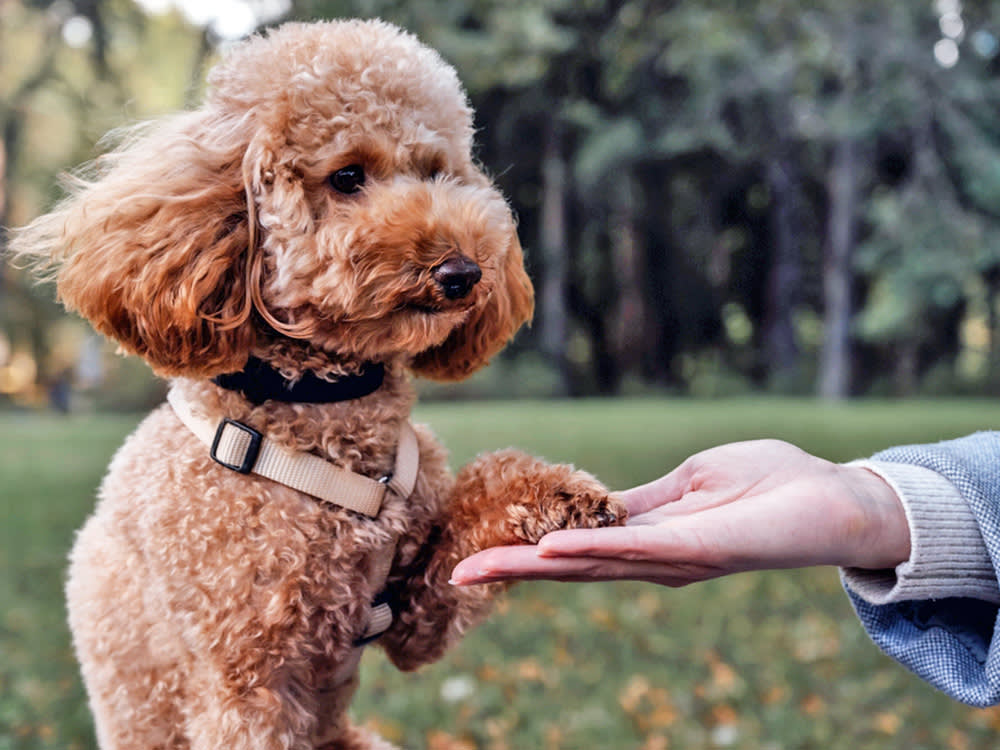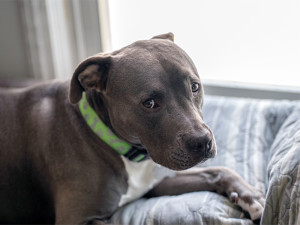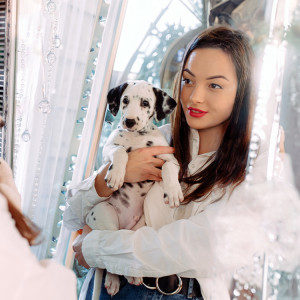5 Ways Dogs Say ‘Thank You’
They can’t send us a Hallmark card, but they do have special ways of expressing gratitude.

Share Article
Thanksgiving is just around the corner, which means many of us are (hopefully) about to spend a bit more time than usual thinking about gratitude. It’s the day for giving thanks, after all. But as we dig into our plates full of stuffing and build towering mashed potato volcanos, our dogs will likely spend most of the afternoon wondering why so many strange people have gathered in their homes — and how long it will take for us to drag ourselves out from our carb-induced naps to take them outside.
Gratitude works a little differently in the canine world, and not just because their emotional experiences of the world are distinct from our own. On one hand, says Alana Stevensonopens in new tab, animal behaviorist, trainer, and authoropens in new tab, dogs often don’t get enough credit for how intelligent, emotional, and intuitive they can be. On the other hand, as IAABC certified dog behavior counselor and authoropens in new tab Gary Abelov opens in new tab points out, they can’t exactly send us a thank-you note whenever we do something nice for them.
“I can’t say that I've ever seen a dog expressing their gratitude like, say, ‘Since you gave me that fabulous treat, I'm going to make your bed for you,’” Abelov says. “I think they express their gratitude just by loving us, which they do pretty unconditionally.”
Like many of our pups’ inner experiences, their sense of thankfulness is a little hard for experts to pin down. That said, Abelov and Stevenson do believe that those who share a close bond with their pups will likely see a doggie version of appreciation in the way they behave around us every day. You just have to be open to their specific cues. Here are some of them.
How much do you spend on your pet per year?

They choose to be around you.
One obvious sign a dog is grateful for your presence? They’ll choose to be around you — perhaps by following you around occasionally, curling up next to you on the couch, or inviting you into their world for some fun playtime.
Dogs who feel grateful for their parents are “not at all afraid” of them, Stevenson says. “They will choose to follow and be attentive and want to be around [them].”
They don’t try to appease you.
Dogs who feel insecure around people or other animals will often lean on appeasement behaviors to smooth over interactions and prevent conflict. That could include avoiding eye contactopens in new tab, turning to the side, or yawning.
If your dog doesn’t tend to do those things in your presence, it’s another sign they feel happy and secure with you. In particular, Stevenson says, “Eye contact is a big one.”
They’re confident around you.
Unlike humans, dogs are not self-conscious — they’re weirdos by nature, and we love them for it. So, if your dog lets their freak flag fly when you’re around, it’s a good sign they appreciate your company.
“They don’t slink or cower when they're near or around you,” Stevenson says. “They don’t need to grovel or look worried.”
Although we can never know what’s going on in a dog’s mind, Abelov believes that the moment when you hand your dog their favorite treat can sure look like thankfulness. “They go, ‘Oh, boy,’ and their tail is wagging, and then they grab it from your hand and happily run off,” he says. “To me, that’s gratitude.”
They act spontaneously around you.
As Stevenson notes, obedience does not necessarily indicate that a dog is happily bonded to their parent. Pups who’ve experienced harsh, correction-based training techniques might follow and acquiesce to their humans out of fear. Truly reciprocal bonds allow for free will — so, if your dog acts playful around you and chases random whims, that can be a sign that they feel fun, fancy, and free.
“A dog who is corrective-based, trained very strictly wouldn’t even think of being spontaneous, because they'll be shocked or choked, or there would be pain inflicted upon them,” Stevenson says. One example: A confident dog might put on a little show for a treat, sitting, twirling, and doing anything else it can imagine to stir your attention. A dog who’s experienced negative reinforcement (Kinship only supports positive-reinforcement training) might not feel safe enough to try any of that.
“Even if you see somebody walking with their dog right next to them … the dog may not be bonded to that person at all,” Stevenson says. “They just may be very fearful.”
They relax around you.
All of these points really point to one thing. Although our dogs might not experience gratitude the way we do (or buy us Mother’s and Father’s Day gifts to show it), they do show us their appreciation in one key way: by relaxing and letting us see their true nature.
To know if your dog is relaxed, Stevenson says, you can always check their body language. “Do they have soft eyes? Do they wag their tail? They look at the person? Do they look at the person with bright eyes, with happy eyes, or do they look worried?”
To Abelov, the question of how dogs give thanks comes back to their capacity for unconditional adoration. Unlike us, our pups live in the moment. They don’t judge. They just love. In other words, he says, “I think they show gratitude just by being who they are.”

Laura Bradley
Laura is a New York-based experienced writer and mom of two rescue pups. Her work has appeared in Slate, Vanity Fair, Daily Beast, The Washington Post, The Atlantic, Yahoo! News, Vulture, Grazia Magazine, and more. When she is not writing or walking the pooches, you will probably find her in the community garden.
Related articles
No, Your Dog Does Not Feel Guilt—Here’s What Those “Regretful” Looks Really Mean
Your pup doesn’t actually feel bad about eating your pizza.
![Dog running toward person]()
Do Dogs Actually Recognize Their Names?
Or do they think of it more as a cue that means “come”?
Should You “Gentle Parent” Your Dog?
If it’s good for kids, it’s probably good for dogs, too.
Is My Dog Self-Aware? How to Measure Their Levels of Awareness
They notice more than you think.
![Woman and her Dalmatian puppy look in the mirror at their reflections.]()
Do Dogs Recognize Themselves in the Mirror?
Here’s why dogs know who they are more by smell than by sight.






